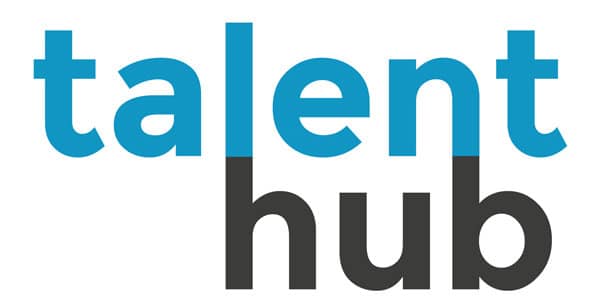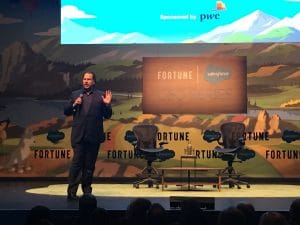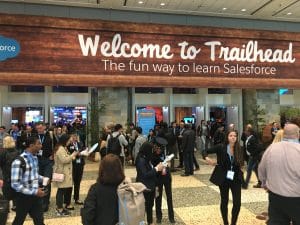Talent Hub recently arrived back from a fantastic Dreamforce 2017 in San Francisco, accompanied by this year’s Talent Hub #Dreamhire, Technical Architect, Albert James.
It was a week of excitement, announcements, and insight into Salesforce’s hugely anticipated plans for the coming years, and a lot of information to soak up in such a short amount of time.
We were particularly interested as to what these announcements meant from a technical perspective, and as a Technical Architect, we asked Albert what his thoughts were.
Albert shared with us his personal key technical takeaways from Dreamforce 2017, and what they have left him most excited about..
Key Technical Takeaways
1. myEverything
I did not count, but there were at least three or four announcements that begin with the word my, such as myTrailhead and myLightning. These are all about customizing Salesforce for, you guessed it, my (as in yours) company. myLightning for example, allows companies to customize the Lightning experience (including Lightning Console) with colours, graphics and generally make it more ‘their own.’
Of particular interest to me, was myTrailhead. The keynote speech spoke about how T-Mobile used myTrailhead to train their reps on company-specific knowledge. Trailhead has become a phenomenon, and “Trailblazers” was the theme of this year’s Dreamforce, so to think that the technology that makes this available can now be used by companies is impressive, to say the least. T-Mobile had badges for all the things you might expect reps to know, when you walk into the store, or call into their call centre, and ask questions – from account management, to technical, and billing.
There was no mention of myTrailhead during the Service Cloud Product Management futures update, but I imagine the team is working hard to figure out how to fit myTrailhead into the Service Cloud and Community Cloud offerings. I could see a huge potential for a company to introduce myTrailhead to its partners and customers, then want to expose those through customer and partner communities, and see their badges while using a service console.
2. DX – deployments of the future
It seems clear to me that Salesforce has recognized the current model of deployment is tired, and they are working to replace it. DX was introduced last year and continues to undergo enhancements. I had not spent much time in DX land, but after what I saw this year, I realize I need to blaze this trail with four key DX badges. One of the things I think many enterprise customers struggle with is the ability to do “feature based” development – that is, the ability to develop a feature, and then promote that feature into production, decoupled with other features which may be in some stage of development. The Scratch Org capability which DX brings to the table (built on a foundational feature available to Partners already for some time), gives developers a place where they can develop a feature based on current production. The only bit missing is the ability to deploy that up the chain, but there are tools available today that will provide this piece, and it’s pretty clear more features will be coming in this space in the native product too. Also, this feature is command line only at this stage, but I heard whispers that a GUI may be coming shortly. This is how I would have developed it – make it a bit more difficult to use, so only advanced users will use it (a sort of high quality beta), and once it’s really ready, then make it available to the masses.
3. Salesforce and Google Cloud partnership
This was my ‘surprise’ takeaway. When I first heard the announcement that Google Cloud was joining the AWS and IBM as Cloud partners, I was surprised. With AWS hosting and IBM’s AI, what more could Google bring to the cloud party that Salesforce didn’t already have available, in some form, with its current partners. G Suite was referenced, as well as Google Analytics, and I think I heard that Salesforce would run natively on the Google platform. Could this mean that G Suite customers could simply tick a box in their admin interface to get the CRM (SFDC) and marketing capabilities? And/or does it mean that Salesforce is looking to diversify it’s hosting programme? Or is it a partnership more founded on marketing merit?
I attended the Mark / Diane “fireside chat” to try to learn more about this, but that session ended up being more of a personal chat about Diane, who she was, how she got into tech, started VMWare and her other company Bebop, and less about the Google / Salesforce partnership. Let’s watch this space closely.
If you missed any of the sessions or keynotes, or couldn’t make it to San Francisco this year, don’t miss out – you can still watch a large selection of here.
Entries are open for Talent Hub’s exclusive competition to be the 2018 #Dreamhire, and so visit our competition page for details on how to enter. The hotly coveted prize includes a ticket to Dreamforce 2018 (25th-28th September 2018), return flights to San Francisco, plus accommodation for the event.
Thank you, Albert, for your fascinating insight. Albert will be sharing further Dreamforce 2017 thoughts with Talent Hub in the coming weeks, and so stay tuned to our Hub Insights, to hear more about his experiences at Dreamforce, the biggest tech conference in the world.
2018 is definitely going to be an exciting year in the Salesforce space!



